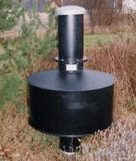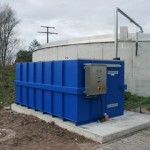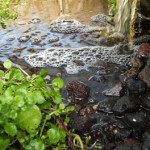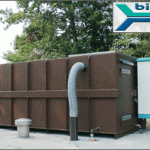Nugent Pump Services Ltd are the only UK distributor for Bioteg odour control systems.

Nugent Pump Services Ltd have supplied odour control systems to Anglian Water, Yorkshire Water, Thames Water and other public sector companies.
What is Biofiltration?
Biofiltration is an air pollution control technology which utilises micro-organisms to biologically degrade odours and other volatile air pollutants contained in waste air streams.
The micro-organisms exist on the surface and in a thin water film surrounding the surface of the biofilter material. During the Biofiltration process the contaminated air is slowly pumped through the biofilter material.
The pollutants are absorbed onto the material’s surface and absorbed into the water film. Simultaneously, the micro-organisms biologically consume i.e. metabolise the pollutants producing energy, biomass and metabolic end products, mainly CO2 and H2O.
The biofiltration process results in a complete decomposition of the pollutants creating no hazardous by-products.
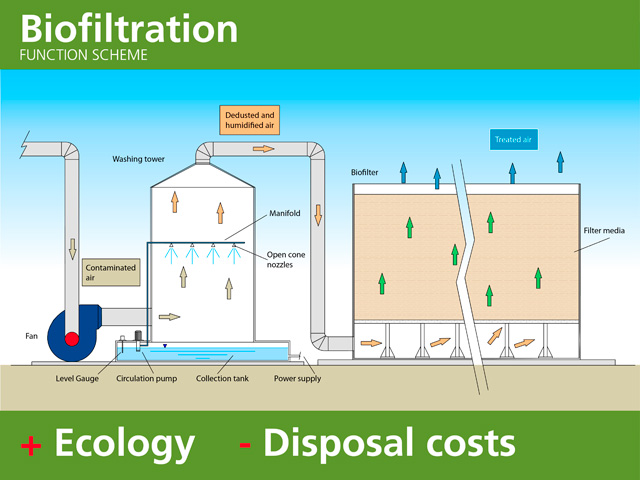
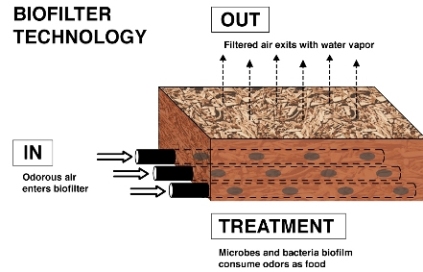
What are Biofilters?
Biofilters are technical appliances that use the biofiltration process to remove odorous compounds and other air pollutants, such as volatile organic compounds’ from waste air.
The name ‘biofilter’ may be confusing, conjuring up images of normal filters, which simply separate pollutants from fluids or gases. In a biofilter the pollutants are ‘consumed’ by the micro-organisms and degraded into biomass, water and CO2. This allows the filter material to continually regenerate itself.
The Design of a Biofilter
The easiest design of a biofilter is the age-old practice of covering landfills with soil. The odorous air rises through the layer of soil, where microorganisms degrade the odorous compounds. However, to plan, design and build a biofilter that will continuously function reliably takes technical and microbiological expertise and experience. A crucial prerequisite for the successful functioning of biofilters, is the creation and maintenance of suitable physical and chemical conditions for microorganisms to thrive. This includes maintaining the right temperature, moisture, pH-value and amount of nutrients. Bioteg ‘ passive’ biofilters are designed to maintain optimum conditions in the environment they are designed for.
Larger Bioteg ‘active’ biofilter systems may have the following additional basic components:-
- Ventilator
- Air humidifier (with integrated heating, if necessary)
- Air distributor
- Filter material
- Control Panel
Biofilter Terminology
Parameter | Definition | Dimension |
Air flow rate | Air flow volume per unit of time (in cubic feet per minute or cubic meters per hour. | m³/h |
Filter area load | Air flow related to the filter area. | m³/(m²h) |
Filter volume load | Air flow related to the filter volume. | m³/(m³h) |
Specific filter load | Mass of waste gas compounds passing through the filter per unit of time and of filter volume. | g/(m³h) |
The Biofilter Material
The performance of a biofilter depends to a great extent on the filter material. The filter material adsorbs the odorous compounds or other air pollutants from the waste air stream.
Naturally existing micro-organisms on the organic material receive the energy and nutrients they need from the decomposition of these compounds. In practice there are many different filter materials in use: composts, bark or bark products, peat products, heather, lava, etc. Bioteg has developed a very effective filter material based on shredded pine roots.
A specific preconditioning procedure increases the media´s surface area, which is populated by micro-organisms. The filter material´s low pressure drop provides for low energy costs. Our filter material is extremely stable, and alters its physical and microbiological properties only slightly over time.
There is practically no long-term compaction of the filter bed. Therefore, Bioteg Biofilters continue to function reliably for many years, dependent on the environmental conditions. After time, the filter material may require replacement. This can be carried out simply, without significant cost and the used filter material can be readily composted without further treatment.

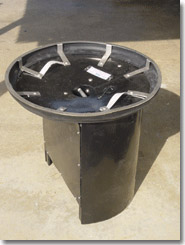
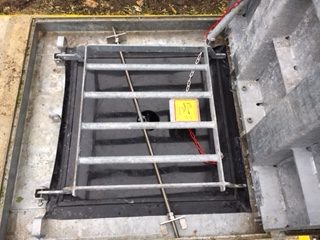
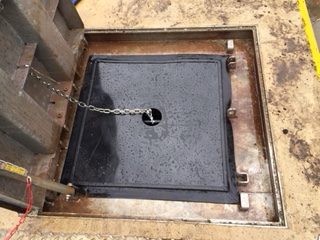
MBF-Series: Manhole Biofilter
The bioteg manhole biofilter is a specially designed manhole insert to biologically remove odours from sewer manholes. Microorganisms in the filter material break down the malodourous substances before they can reach the open air.
The GullyQUICK System allows fitting the biofilter into the manhole without tools – in a matter of seconds. Of course it can be easily removed for sewer system maintenance.
Several thousand bioteg Manhole Biofilters are being used successfully by public and private industries throughout Germany, Austria and Switzerland.
Special sizes are available upon request.
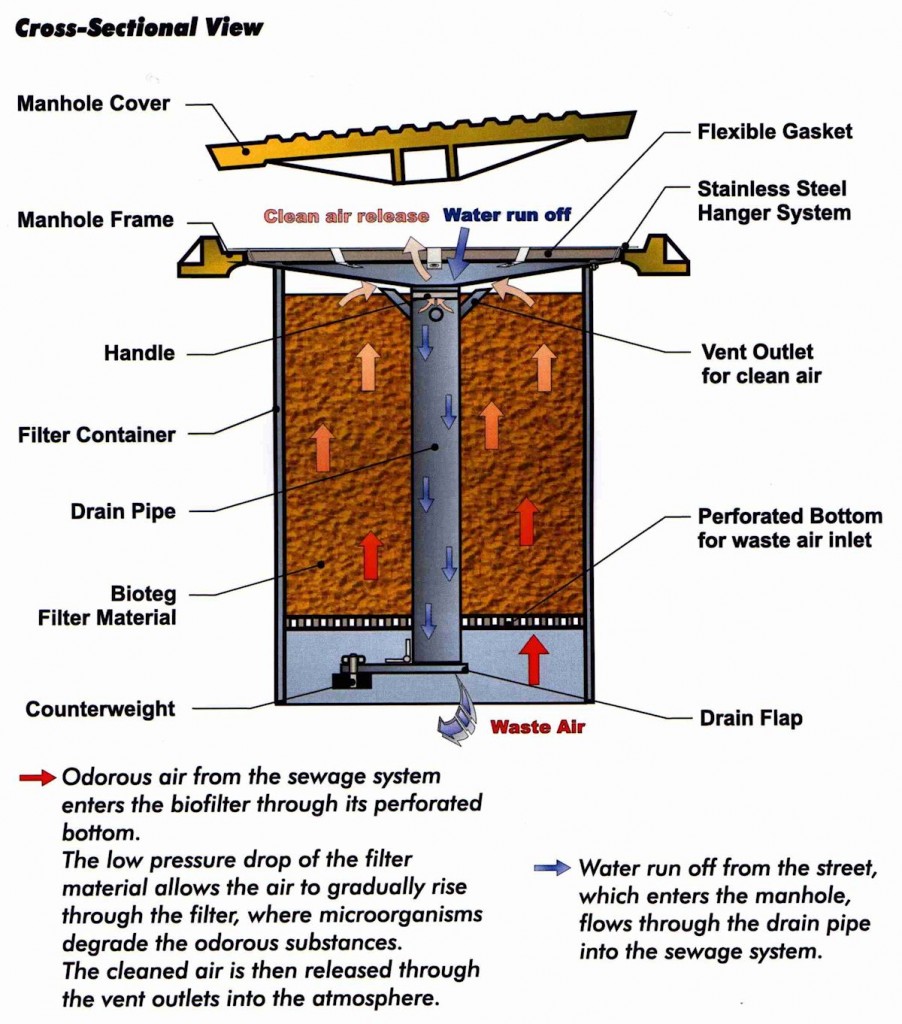
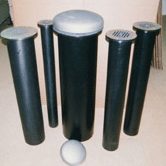
REBF-Series: Vent Pipe Biofilter
These biofilters have been specially designed to reduce odours from various vent pipes.They are simply inserted into the vent pipe.
We offer the Vent Pipe filters in a standard range of sizes from 4-17 inches (100 – 500mm), however, special sizes are available upon request.
EBF-Series: Drop-In Biofilter
A biofilter designed to treat contaminated air from covered storage basins, such as sedimentation tanks.These filters are mainly used as passive biofilters, but can be upgraded into active biofilters at any time. The filters are suspended on a flange ring on the cover, treating the contaminated air of the enclosed system before it is released.
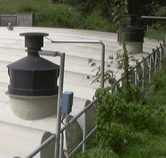
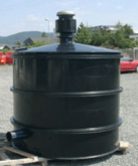
SRBF-Series: Circular Stand-Alone Biofilter
A small, compact biofilter designed to treat small airstreams wherever odour emissions occur, particularly in sewage treatment plants, landfills and sewage storage systems.These filters have mostly been used to deal with sewer odour problems, however, they can be applied to relieve a variety of different odour problems (food or chemical industry, rendering plants, paper processing, etc.). They can be used as inexpensive passive biofilters (displacing method), and are readily upgradeable to active biofilters, at any time, by the addition of a cover and a fan.To adapt to higher airstreams (of up to 1,200 cfm), our Circular Stand-Alone Biofilters can be run in a two or three stage operation series.
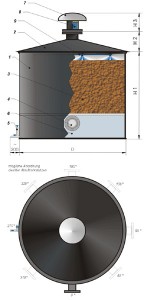
- Filter container
- Detachable cover
- Filter material
- Connecting branch for input pipe
- Siphon drainage and condensate overflow
- Air distributor and condensate separator
- Ventilator cover
- Ventilator
- Surface irrigation system
DEBF-Series: Force Main Biofilter
These biofilters have been designed in concert with various German wastewater engineers and technicians to reduce sewage odour along force mains. The filter is mounted, above or below ground, to the connecting piece of an air release valve.
The filters can be run in series for greater airflow rates.
